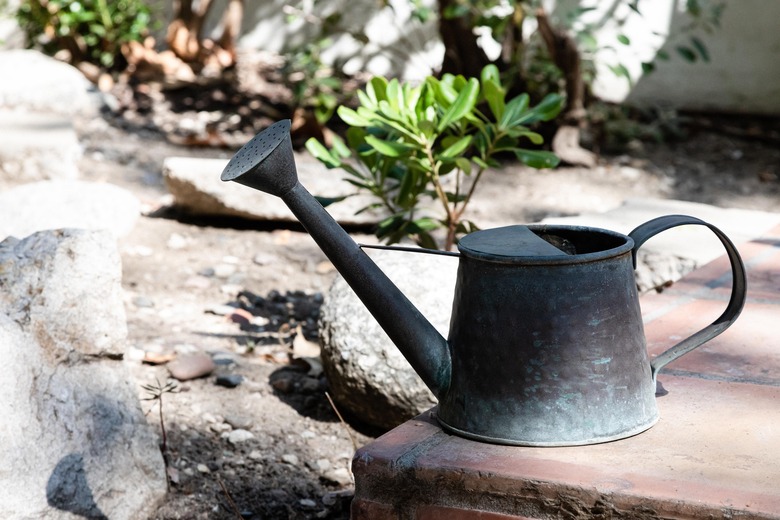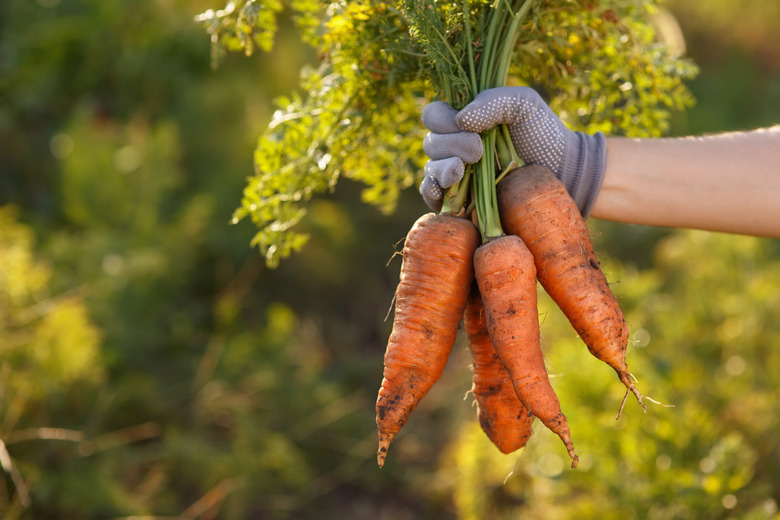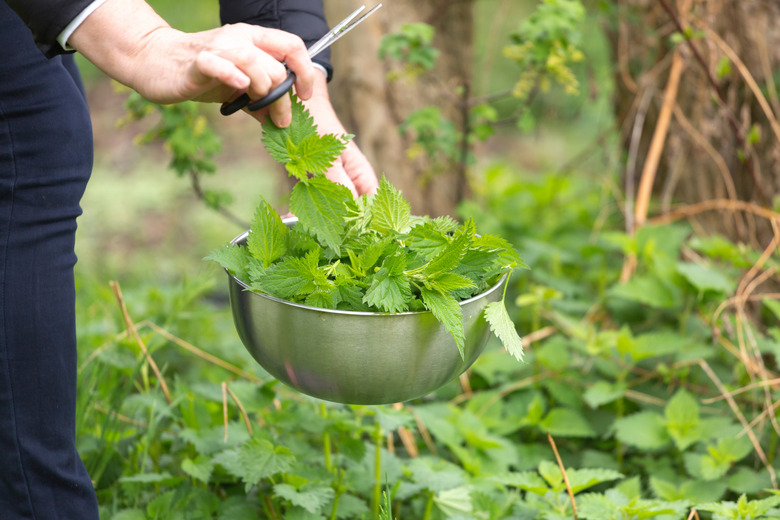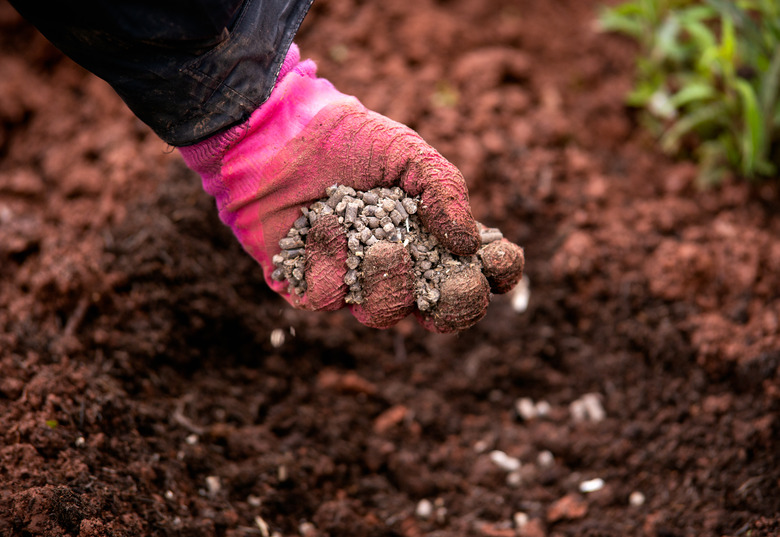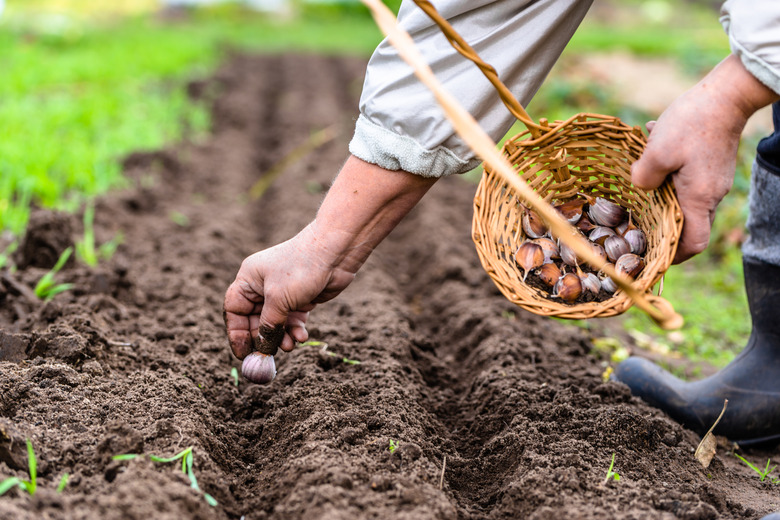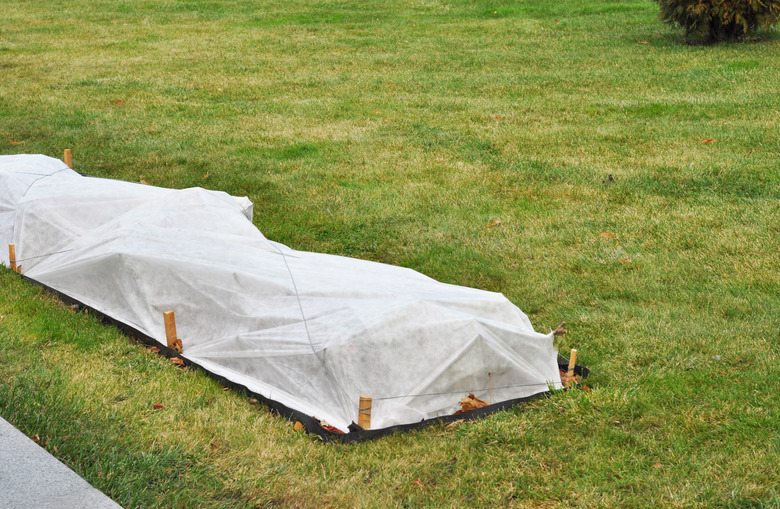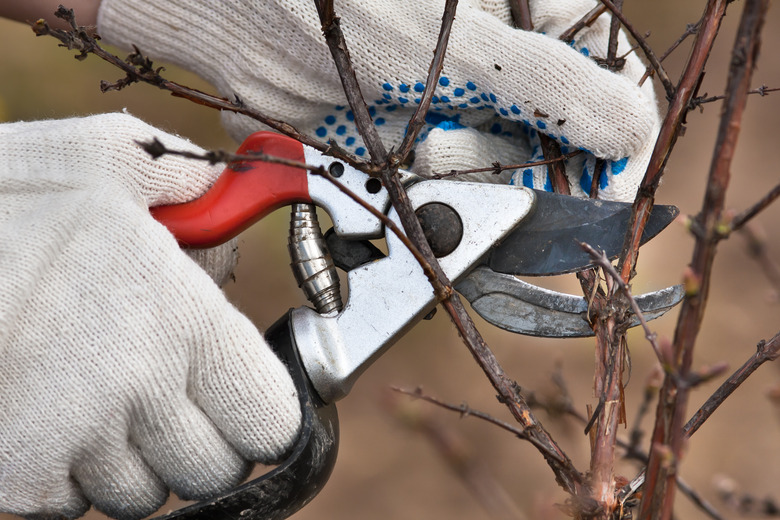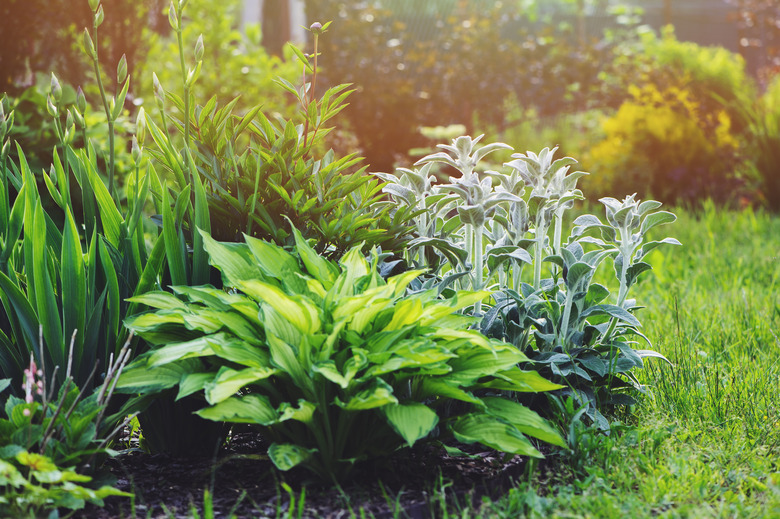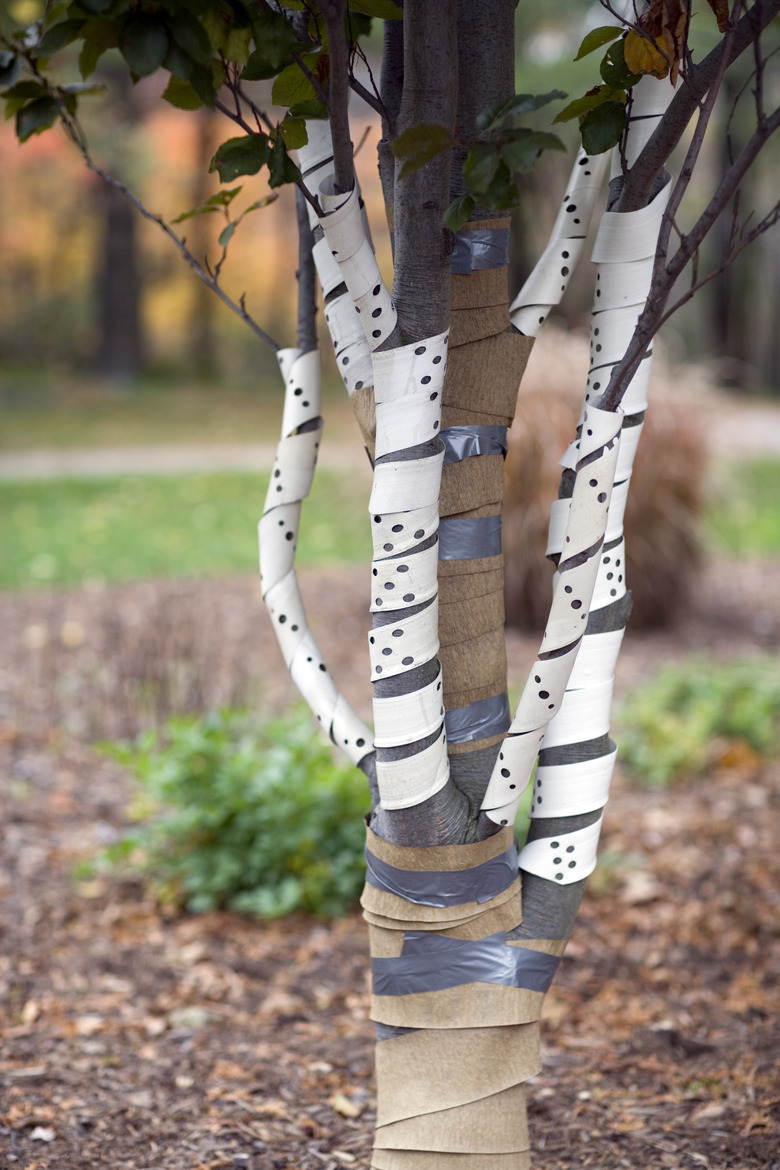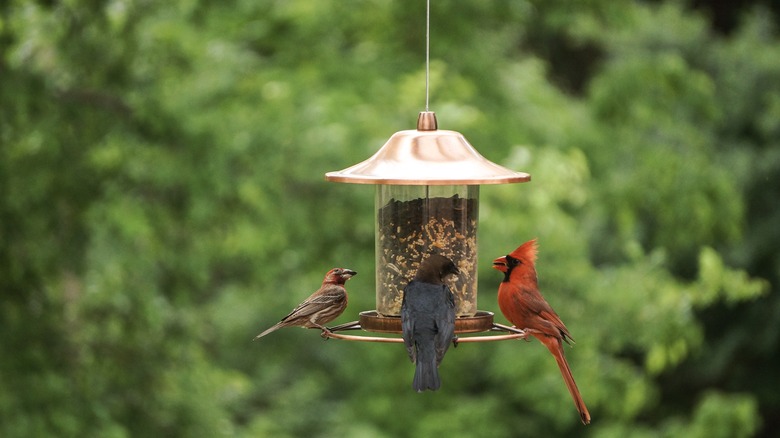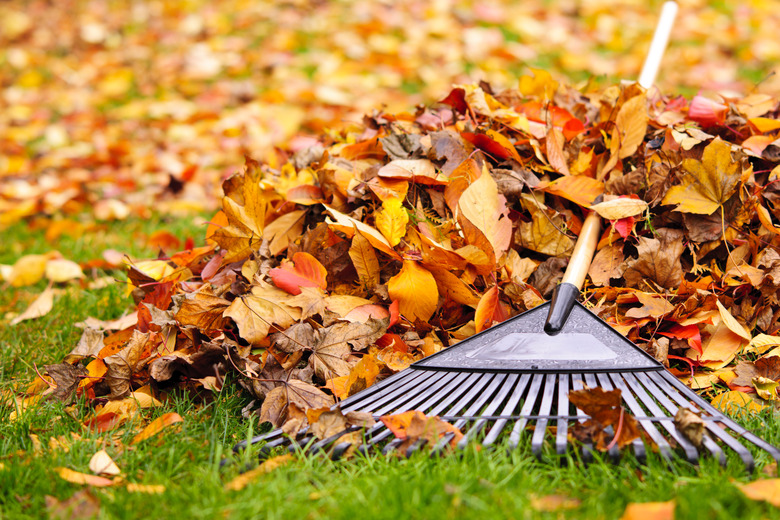Preparing Your Garden For Winter: 10 Steps To Follow
We may receive a commission on purchases made from links.
Summer is the garden's busiest season, but as fall arrives, it is important to take the steps necessary to prepare the plants and soil for winter's arrival. While winter can look very different in different regions, it can dip to very cold in the North. Some plants thrive in cold weather, and it's important to match your choices with your hardiness zone.
Whatever your winter looks like, there are a few critical tasks you should undertake before the last autumn leaves fall.
1. Harvest Fall Crops
1. Harvest Fall Crops
Many fall crops can and should be harvested before the first frost but not all. It's key to know which are tender, which are hardy, and which are semihardy and then harvest each category at the appropriate time. Herbs also fall into those categories.
- Harvest tender veggies and herbs before the first
frost from your vegetable garden. These include warm-season vegetables, like tomatoes and zucchini, as
well as beans and peas. Pumpkins and squash fall into the tender category too.
As you take these plants out, remove all plant detritus as well, tossing
infected foliage or fruit. - Harvest semihardy vegetables before the first hard
frost. Cabbage, chard, kohlrabi, leeks, and arugula fall into this category. If you absolutely can't get them in, covering them
with a row cover can prevent serious damage. - Leave hardy veggies — like Brussels sprouts, kale, broccoli,
and spinach — in the ground until you are ready to eat them. They can survive
temperatures down to 25 degrees and may even taste better after a frost.
2. Harvest or Protect Herbs
2. Harvest or Protect Herbs
Not every herb is tender but some are. They generally fall into the same categories as fall vegetables: tender, semihardy, and hardy.
- Harvest and remove tender herbs, like basil. They won't
stand even a light frost. - Either cover or pot and bring indoors semihardy
herbs, like rosemary and parsley. If you want to protect them outdoors,
use row covers or a thick layer of straw mulch. - Cut what you'll use of hardy herbs, like sage and thyme,
and then leave them outside over winter. They will go dormant but revive in
springtime.
3. Build the Soil
3. Build the Soil
Growing crops takes a toll on your soil. While many gardeners wait until spring to add compost, it's more effective to add a thick layer in autumn and let it improve the soil all winter long.
- Till the garden soil, whether you plan to plant in
winter or not. This breaks up the soil and allows the soil to better integrate
nutrients. - Layer 2 or 3 inches of mature compost or aged manure
on the soil surface of all garden beds. Take this step at any point before the soil
freezes. - Pile mulch on top of the compost or manure. This slows
the nutrients from leaching out of the area and slows the growth of weeds in
the area.
4. Plant Winter Crops
4. Plant Winter Crops
In mild-winter areas, it is possible to plant a variety of vegetables in a winter garden. The colder your winter gets, the fewer crops will make it through. Some crops can be planted for an early winter harvest, while others planted in late fall will be delicious when harvested in spring or summer.
- Plant garlic and shallots in the late fall. These
are bulb crops that survive winter's worst. They will be ready for harvest in
late spring or summer. - Plant leafy greens and root crops, like carrots, in autumn. You can
harvest spinach and lettuce as well as carrots and rutabagas late in fall. It
is possible to keep these crops going into winter by protecting the seeds with thick
mulch before a serious freeze for a late fall crop. - Consider planting cover crops, like clover or winter rye, to hold the soil
together during the winter and prevent erosion. They can also boost the soil's nutrient
levels.
5. Protect Rose Bushes
5. Protect Rose Bushes
Roses need special care in winter. This is particularly true in areas where snow falls and freezing weather is expected. The type of care depends on the type of roses that you decide to buy and plant.
- Check the hardiness zones of your roses. Before the
first fall frost, dig out and pot those that are not hardy in your region and bring
them into the garage or enclosed patio for winter. - Prune back roses to take off any broken, dead, or
diseased canes. - Stop fertilizing roses between six and eight weeks
before the date of the first fall frost. Continue irrigating roses until the
first autumn frost. - Protect roses after the first frost by piling up
compost or chopped dry leaves around them or use special devices for rose protection. Make sure that they are covered to the point where the rootstock is attached to the stem. - In cold-winter
regions, build a small cone or cage around the bush with chicken wire to keep
the leaves in place. It is also possible to use dry wood chips or pine needles. Lay the canes of climbing roses on the ground
without breaking the stems. Use mulch or evergreen branches to cover them.
6. Maintain Berry Patches
6. Maintain Berry Patches
Berry bushes usually do just fine in cold winters. To prepare them for the drop in temperature, it's a good idea to prune and cover them in fall.
- Prune raspberry bushes in winter. For those that bore fruit in summer, leave a handful of the healthiest
canes per square foot of the berry patch. For those that are fall-bearing, cut
them to the ground after the harvest. They will spend the winter dormant and
will reappear in spring. - Protect the canes of newly
planted blackberry plants by mounding up soil. This will prevent them from
being knocked out of place by hard frosts. - Mulch both blueberry patches
and strawberry beds. Straw works well to provide the protection they require.
7. Protecting Perennials in Winter
7.
Protecting Perennials in Winter
Perennial flowers and shrubs are usually the core of the garden, whether planted in containers or in beds. Some perennials grow best in shade, and some grow best in sun. Perennials are plants that last more than one growing season, and care must be taken to select plants appropriate to your hardiness zone. Even so, they do best with some protection from winter cold.
- Keep watering perennials through
the autumn until the first frost. This helps them survive through winter. - Do not prune those perennials
that provide seeds for wildlife in winter. This includes coneflowers and other
perennials with impressive seedheads. - Prune back perennials prone
to powdery mildew, like hostas and phlox, once the ground freezes hard. This
will prevent the fungal disease from spreading to other plants. Only leave a few inches of stem and then cover it
with mulch. - Dig out perennials, like
cannas and dahlias, after their leaves turn black in a frost. Put them in a dry
spot on newspaper for three days and then pack them in shredded newspapers and let
them overwinter in a dark, humid spot until spring. - Irrigate potted
chrysanthemums well after their blossoms are finished. Place them in a
protected area of the yard and use ample straw to protect them.
8. Taking Care of Trees
8. Taking
Care of Trees
Mature trees don't need a lot of care to make it through winter. The most important rule is to refrain from doing too much.
- Avoid pruning trees or shrubs in autumn, especially right
before winter. No matter how shaggy they appear, refrain from trimming them
unless branches are broken or diseased. This is because their wounds won't have
time to heal before winter, and even more importantly, pruning can stimulate new
growth that will be killed off with the cold temperatures. - Protect smaller trees and shrubs from heavy snow cover
by building a structure around them. This can be a structure of wood or of chicken wire
filled in with straw or leaves. The structure might also be made of burlap
wrapped around stakes. - Wrap the lower trunk of young fruit trees with
special wrap to prevent pests from using the bark as food over winter. Consider wrapping
the trunks of any young trees with a southern or southwestern exposure since
the sunny days and freezing nights of late winter can cause them to split.
9. Feed the Birds
9. Feed the Birds
Gardeners appreciate their wild birds as an integral and ornamental part of the ecosystem and even plant shrubs with berries to provide them with food. Birds help get rid of insect pests in the summer but need help to make it during the cold months.
- Install bird feeders in several spots in your
yard, making sure they are well out of reach of neighborhood cats. - Check the feeders regularly so that they don't
empty. High-fat foods, like suet, are particularly helpful. - Offer water to birds as well. This may not be essential
if you live near streams or rivers that don't freeze, but regularly maintained bird water bowls and a
bird bath can help.
10. Maintain Your Garden
10. Maintain Your Garden
Just like a house needs regular maintenance, a garden cannot remain in top shape without regular work. Most gardeners have a list of chores they consider important. Add these to your list to prepare the garden for winter.
- Rake your leaves,
especially from the lawn. Allowing sodden layers of leaves can kill the grass.
You can shred the leaves and add them to the compost bin or use them as mulch.
Alternatively, pile them into a tarp and move it to a distant corner to give beneficial
insects a place to stay safe through winter. - Weed the garden.
Although it might seem unnecessary given the approach of winter, late fall is a
great time to rid your garden of invasive weeds. Remember not to toss them in
the compost where the seeds may live on. - Care for your tools. They have served you well all summer and need
some clean up and to be stocked indoors for winter. After washing them to get off any dirt, remove
rust with sandpaper or a wire brush. Sharpen tools, like pruners, hoes, and
shovels. Oil your tools with vegetable oil to avoid future rust. For power
equipment, drain the fuel tank and follow the maintenance requirements in the
instruction manual. - Clear detritus from
garden beds and paths and dispose of it appropriately. This includes pulling out
any dead annual plants, including vegetables. Removing fallen foliage and fruit means
less pests and diseases the next spring. - Empty watering cans
and other containers to prevent them from splitting in the cold. It's a good
idea to store them upside down to prevent them from filling up with water. Turn
off any irrigation system you have in the backyard as well.f - Protect your compost pile by topping it with plastic or straw. This should be done before snow
arrives.
